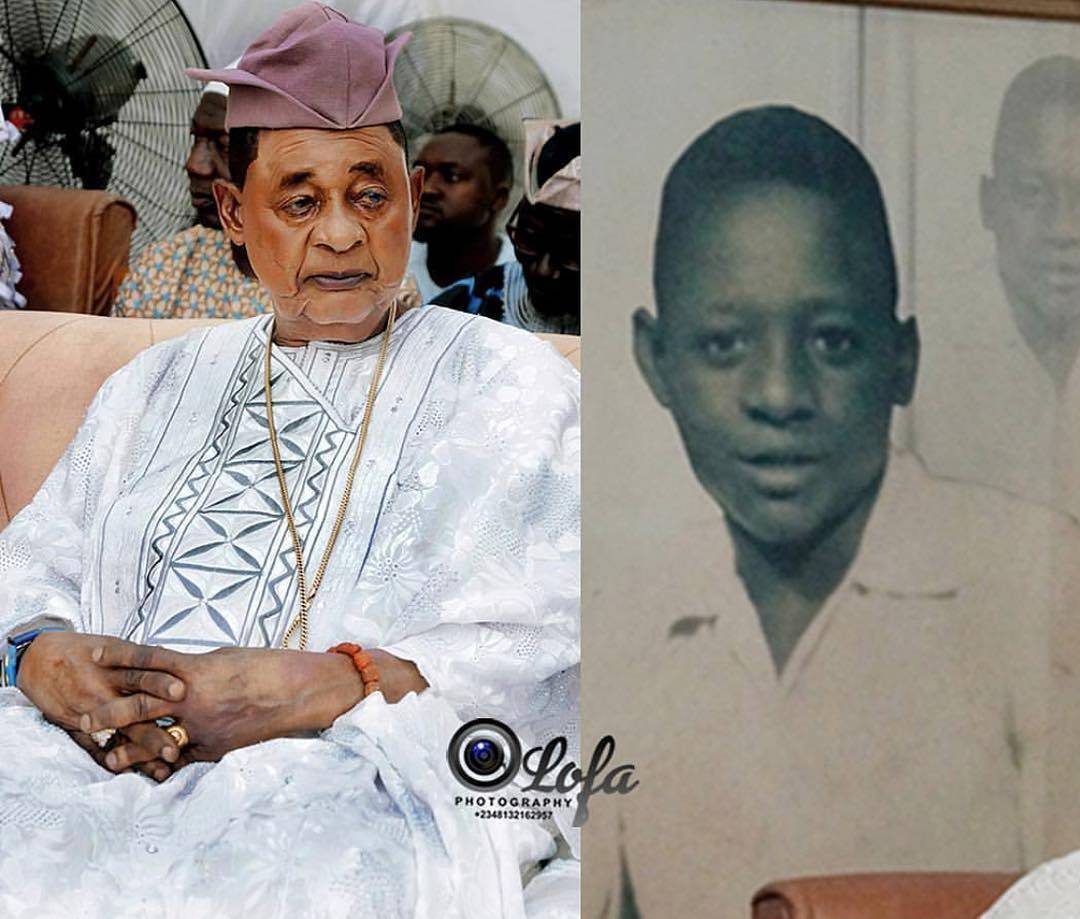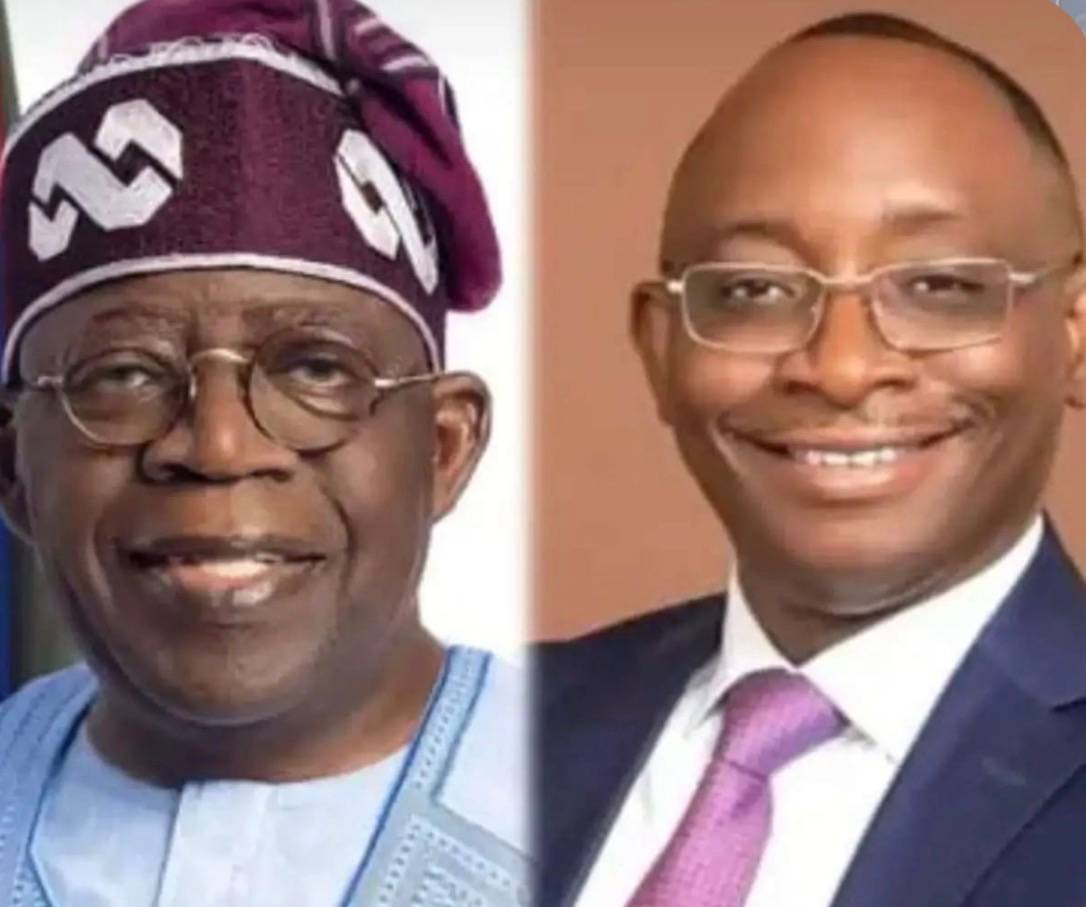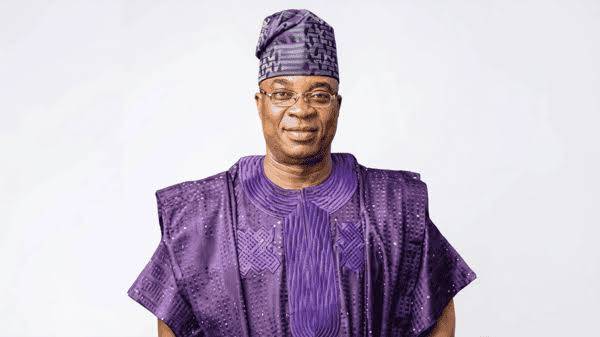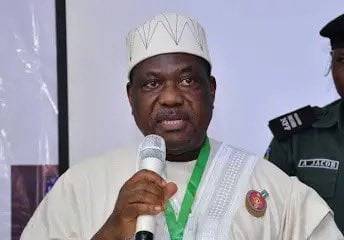By Onigegewura
The announcement shook the whole of the Western State. From Oyo Alaafin, it rolled across the Yoruba nation like thunder. The news was heard in Ile-Ife, the spiritual capital of Yoruba. They heard it in Ketu and Sabe in the then Republic of Dahomey. Orangun heard the news in Ila. Owa was informed in Ilesa. There was nowhere in the world where they did not hear the news.
Oba Bello Gbadegesin, Ladigbolu the Second, the Alaafin of Oyo had joined his royal ancestors. January 25, 1968 was a day most people in Yorubaland would never forget. Messages of condolence began to pour in like July rain from all over the world. As people prayed for the repose of the soul of the departed king, they also mouthed prayers for the unknown prince who would be chosen to replace him.
Without Onigegewura telling you, I am sure that you know that the stool of Alaafin is like no other. Or haven’t you heard that A jii se bi Oyo laari, Oyo ko ni se bi baba eni Kankan. Whatever affects Oyo affects Yorubaland. It was therefore in the interest of all children of Oduduwa that a new Alaafin should be appointed without delay.
The First Meeting
In Oyo Alaafin, there are two ruling houses according to the approved and registered declaration of 1961. These are the Agunloye Ruling House and the Alowolodu Ruling House. The late Oba Gbadegesin Ladigbolu was from Agunloye Ruling House. It followed naturally that it was now the turn of Alowolodu Ruling House. Aaya be sile, o be sare. The Alowolodu family did not wait for any formal invitation before summoning a meeting of all eligible princes.
At the meeting held on January 29, the family agreed to forward names of four princes to the Oyomesi, the traditional kingmakers, for them to select one of them to be the new Alaafin. You want to know the nominated princes? Onigegewura will tell you. Prince Ashiru Mafolayan Adeyemi was number one on the list. His name was followed by Prince Sanda Oladepo Oranlola Adeyemi. Prince Agboyin Tella Adeyemi was the next and the last but not the least was Prince Isiaka Tella Adeyemi.
Following the nomination by the family, the list of the four recommended princes was quickly sent to the Bashorun of Oyo, Chief Tijani Esuola Akano, who by virtue of office was the Head of the Kingmakers. This was done on January 30. It however appeared that the Adeyemi-Alowolodu Family had jumped the gun in their haste to ensure that the throne was not unduly kept vacant. You want to know why?
Onigegewura has told you that the Alowolodu did not wait for any formal invitation before the family meeting was convened. Well, that was contrary to the Chiefs Law. For the meeting of the family to be valid in law, they must have received an invitation from the Secretary to the Council requesting them to forward names of selected candidates to the relevant authority, which in this case was the Oyomesi. I hope you now understand. The meeting of January 29 where the four princes were nominated was therefore a nullity in law as the condition precedent [invitation to the family] was missing.
Formal Announcement
It was not until February 6 that the Secretary of Oyo Multi-Purpose Joint Board formally declared the Alowolodu ruling house as the ruling house to provide the next Alaafin. The Secretary went further to request the family to submit the names of their preferred candidates to the kingmakers before February 20, 1968. Iduro ko si, ibere ko si, fun eni ti o gbe odo mi. The family quickly summoned another meeting. And that’s when the drama of epic proportion began, a drama that would take the whole of three years to resolve.
Following the receipt of the formal invitation, the Head of the Alowolodu Ruling House, Mogaji Alabi Adeyemi invited the family to a meeting in his house. Alabi Adeyemi who became the Mogaji during the reign of Oba Abubakar Siyanbola Akanbi Ladigbolu was of course not new to this type of assignment. He had become a veteran of sort, having been the Mogaji who presided over the selection of the late Alaafin Adeniran Adeyemi.
It was claimed that the meeting resolved to forward the name of only one prince to the Oyomesi through the traditional head of the Princes, the Babaiyaji of Oyo, Chief Sanda Moradesa. And the nominated prince, Sanda Oladepo Oranlola Adeyemi, a former local government police officer, happened to be the son of the Mogaji of the family, Alabi Oranlola Adeyemi.
Other Princes Emerged
As it turned out, it appeared that the decision to select the son of the Mogaji as the sole candidate was not unanimous. Nine other contestants who were supported by different factions of the Ruling House presented themselves to the Babaiyaji as the family candidates. Top on this list was a young prince who was an insurance executive in Lagos, Prince Lamidi Olayiwola Adeyemi who was selected to be the flag bearer by his own section of the Alowolodu Ruling House. Other sections of the ruling house also nominated their own candidates which include: Princes Lamidi Abajaopapo Adeyemi, Bello Adebayo Adeyemi, and Ashiru Mafolayomi.
This was in fact not contrary to the relevant laws as the Chiefs Law allowed candidates to apply either jointly or severally. In effect, princes can be nominated together or individually. It was as a result of the controversy that attended the story Onigegewura is narrating to you that led to the amendment of the law in this respect. But more of that later.
The Babaiyaji, Chief Sanda Moradesa as the traditional head of the princes invited the ten candidates sponsored by the different factions for the stool to a meeting. The meeting was held in the house of the Bashorun of Oyo. It was at this meeting that the Babaiyaji introduced the ten princes to the seven-man council Oyomesi. This was followed by formal presentation of the list of the 10 candidates to the Bashorun as required by the registered declaration for the appointment to the chieftaincy of the Alaafin of Oyo.
The Quest for a Literate King
Something however happened at the meeting. A trend had started in the 1930s as agitation for independence gathered momentum. It was becoming clear that for a traditional ruler to be able to hold his own in the comity of Obas, an additional criterion must be added to the traditional requirements regulating qualification for appointment. Kingmakers across Yorubaland began to insist that princes to be appointed must be lettered. This was considered necessary to enable a king to be able to interact with government officials and visitors to his kingdom.
The king who saw the future
It was as if Prince Lamidi Adeyemi’s father had seen the future in this regard. Alaafin Adeniran Adeyemi had insisted that young Lamidi and his other children must be educated. A fruit does not fall far from the tree. Layiwola also shared his father’s passion for education. His ambition was to study Law and become a Lawyer.
It was therefore not surprising that at the meeting held in the Bashorun’s house, the princes were informed that only literate princes would be considered fit and proper to ascend the throne of Sango, the god of thunder. With this announcement, five princes who were regarded as being unlettered were automatically axed from the list, leaving the five literate princes. Prince Sanda Ladepo Adeyemi, the son of the Mogaji Alowolodu, and Prince Lamidi Olayiwola Adeyemi, the eldest living son of Alaafin Adeniran Adeyemi, were two of the princes who successfully scaled the literacy hurdle.
Between Layiwola and Ladepo
The whole of Oyo town waited with bated breath and suppressed excitement to see where the pendulum was going to swing between the two leading candidates. Both Princes Ladepo and Layiwola were young men of immense clout in the town. As Onigegewura told you, Ladepo was educated and well to do. He was a retired local government police officer.
Urbane Layiwola was also educated and had means. He was an insurance executive with Royal Exchange Assurance in Lagos. He was also well-exposed and well connected having lived under the tutelage of two distinguished Knights of British Empire, Sir Ladapo Ademola, the Alake of Egbaland, and Sir Kofoworola Abayomi [Kofo Abayomi Street in Victoria Island is named after this illustrious surgeon. His wife, Lady Oyinkan Abayomi also has a street named after her in Ikoyi. Onigegewura will tell you their intriguing story one day.]
There was however a snag in the candidacy of the former. Prince Ladepo had a living father. Onigegewura has told you that his father was in fact no other than the Mogaji of Alowolodu ruling house. It would therefore be contrary to tradition for the powerful Alaafin to have a living father. On his own part, Prince Layiwola had no such paternal encumbrance. His father, Alaafin Adeniran having died in Lagos, and his older brother, Prince Adebayo Adeyemi having predeceased their father. His mother, Olori Ibironke died when he was a toddler. The coast thus appeared to be clear.
If only the young prince knew…
The Choice of the Oyomesi
On March 4, 1968, the Oyomesi met to consider the five candidates. After extensive traditional deliberations, the Oyomesi finally selected one of the five princes. Who was selected? Your guess is good as mine. The choice of the kingmakers was no other than the scion of Adeniran Adeyemi, Prince Lamidi Olayiwola Atanda Adeyemi.
The whole of Oyo erupted with joy! Atanda l’Oba o! Atanda l’Oyo yan o!! Layiwola l’Alaafin o!!! The news spread from compound to compound, from quarters to quarters to quarters, and from town to town. But though selected by the Oyomesi, Atanda was not yet the Alaafin, at least formally. Appointment of Alaafin is a three-stage process. The starting point is nomination by the family. The second is selection by the Oyomesi under the leadership of the Bashorun. The final stage is the approval of the selected prince by the Government.
The name of the young prince who – only months before – was an insurance executive was promptly forwarded to the Commissioner in charge of Chieftaincy Affairs in Ibadan.
The Road to Ibadan
It was in Ibadan that the story changed. It was claimed that the Commissioner failed to forward Lamidi Adeyemi’s name to Western State Executive Council. Instead of forwarding Layiwola’s name, the Commissioner directed that “the name of one candidate be placed before the Kingmakers for consideration.” And the candidate was not Layiwola but Ladepo Oranlola Adeyemi.
Oba ran ni ise, odo Obà kun. The Oyomesi found themselves between the devil and the deep blue sea. The directive was clear and unequivocal: consider the candidacy of only Prince Ladepo. Though the directive did not say it, it was clear that the directive meant that the candidacy of Prince Layiwola was a non-issue as far as the government was concerned.
What was the Oyomesi to do?
Bashorun summoned a meeting of his Council and tabled before the distinguished kingmakers the directive from Ibadan. You already know that oro sunnunkun, oju sunnukun ni a n fi wo. The old men weighed the matter heavily. They considered it from the west and the east. They turned the matter to the south. They also looked at it from the north side. It was finally resolved. They sent message back to Ibadan that the matter had been resolved. The message to Ibadan, like the directive from Ibadan, was clear and unequivocal.
The choice of the kingmakers was Prince Layiwola Adeyemi.
Politics versus Tradition
Commissioner Ajayi thought he had misheard the message. Layiwola Adeyemi? Could these old men have misunderstood his instruction? Although the two names started with ‘LA…’ but how could they have mistaken LADEPO for LAYIWOLA. It must have been an unintended mistake.
In May 1968, he sent another message to Oyo. To ensure that the same mistake was not repeated, he made sure that it was clear that the Oyomesi’s term of reference was to consider the SOLE CANDIDACY of Prince Sanda Oladepo Oranlola Adeyemi. He was certain that there was no way Sanda Oladepo Oranlola Adeyemi could now be mistaken for Lamidi Atanda Olayiwola Adeyemi.
He waited to hear from Oyo.
He did not have to wait for long. The terse message came back almost immediately. It appeared that Lamidi’s case is like that of proverbial machete which would always land on its side no matter the number of times it is thrown up.
The choice of the kingmakers had not changed: Lamidi Adeyemi.
The refusal of Ibadan to accept the decision of the Oyomesi polarized not only Oyo town, it also divided the kingmakers. While Bashorun, Yagba, Shamu, Alapinni and Akinniku were unanimous on the choice of Lamidi Adeyemi, Ashipa and Laguna were favourably disposed to the candidacy of Ladepo Adeyemi. Even in Ibadan, the State Executive was also divided. While some commissioners were rooting for Layiwola, others were supporting Ladepo. Well, ileke ma ja sile, ileke ma ja s’oko, ibi kan naa ni ileke ma ja si. As both Ladepo and Layiwola could not be installed as Alaafin at the same time, it was certain that something must give.
As if that was not enough to contend with, another prince from the same Alowolodu suddenly appeared as if from nowhere to lay claim to the throne. In the petition forwarded to the Commissioner for Local Government and Chieftaincy Affairs, it was stated that Prince Ladepo was not the unanimous candidate of the Alowolodu but the wish of his father who was the Mogaji. According to them, Prince Tella Kakansi Adeyemi was the rightful candidate.
General Robert Adeyinka Adebayo was the Military Governor of Western State at this crucial period. He considered the cases of the respective princes. It was clear to him that ejo lowo ninu. The hands of snake are within its body. He realized that there were some hidden forces at play. On June 6, the government decided that in order to discover both apparent and hidden forces, an inquiry should be conducted to unravel the mystery and recommend steps to resolve the logjam.
Obileye Commission
On June 12, yes the same June 12 but this time in 1968, Obileye Commission began to sit. The Commission was headed by Magistrate Adesina O. Obileye who was called to the Bar in 1954. Mr. M. E. Ogundare [later My Lord Justice Ogundare of the Supreme Court] appeared as Counsel to the Commission. Onigegewura has told you that the Oyomesi had been polarized. The five kingmakers who supported Layiwola Adeyemi: Bashorun, Yagba, Alapinni, Shamu and Akinniku retained the services of Mr. Abiodun Akerele who incidentally was the Balogun of Oyo [Please remind me to tell you something about this title later]. Akerele led the duo of Afe Babalola [later Aare Bamofin of Yorubaland] and Tunde Alaka. The three of them also appeared for Layiwola Adeyemi.
The other two members of Oyomesi, the Laguna and the Ashipa, were represented by Mr. Jide Olatawura [later My Lord Justice Olatawura of the Supreme Court]. The Mogaji of Alowolodu went all the way to Lagos to hire the services of Chief S. O. Coker. Prince Ladepo Adeyemi – the nominee of the Alowolodu Family retained his own lawyer in the person of Mr. S. L. Popoola.
Alaafin Edict Came Out
The Commission sat and submitted its report. According to the Government, “the Executive Council considered the Obileye report and noted that the nomination of Prince Sanda Oladepo Oranlola Adeyemi by the Alowolodu Ruling House was the only valid one and directed that the kingmakers should be informed accordingly.” That was not all. The Executive Council also approved the publication of an Edit which “should stipulate the action to be taken by the Kingmakers on the Alafin Chieftaincy and what would follow if they disobeyed…” What you have just read is not Onigegewura’s words. That’s the government position. [Recall that this was during the Military era. Decree was for Federal Government, Edict was for State Government. In Democracy, the statutes are designated Act and Law respectively]
Well, in accordance what you have just read in the preceding paragraph, the Government promulgated The Alafin of Oyo (Filling of Chieftaincy Vacancy) Edict No. 12 of 1968. The Edict directed the Oyomesi to discharge their functions as to “permit reasonably of the making of their decision, in accordance with the Chiefs Law and the Declaration in respect of the candidature of Sanda Oladepo Oranlola Adeyemi”. Yes, you read that right. That’s the express provision of the law. But that’s not all. The Edict went further to direct the Oyomesi to notify the Ministry of compliance within 14 days of the commencement of the Edict.
14 days! Yes, the kingmakers were giving two weeks to make their decision in respect of Prince Ladepo Adeyemi’s sole candidacy. 14 days or 140 days, it appeared that Oyo people were having none of it. The whole town erupted, not with this joy this time around, but with anger. It was Layiwola or no other.
Would the Kingmakers Dare the King
What of the kingmakers? Though they were not learned in law, they understood the legal implications of the Edict as if it was written in Yoruba language. The Bashorun convened another meeting of his peers. They considered the new development in the light of the military edict. What were they to do? Of course you know that if a load can neither be placed on the head nor on the ground, there is usually a third alternative. The Oyomesi responded to the Government by rejecting the candidature of Prince Ladepo.
When Governor Adebayo was informed, he realized that the matter was beyond military decree. As a cultured Yoruba man, the governor whose son would later become Governor of Ekiti State invited the kingmakers and the princes to Ibadan in order to resolve the issue. But the kingmakers were adamant. They made it known to the Governor that history and tradition did not support Omo Obas agreeing on a candidate. It was for the Omo Obas to forward names of candidates to the kingmakers and for the Oyomesi to select one of the princes as the Alafin. Tradition did not allow for a single candidate to be foisted on the Oyomesi. Where then lies the discretion of the Oyomesi to select if they had only one candidate before them? The Oyomesi asked the government.
I hope you understand the issues involved.
The kingmakers were not alone. Many of the princes who attended the meeting also made it clear to the governor that at no time did the Ruling House nominated only one candidate.
I hope you recall that Onigegewura told you that the government notice stated that the edict would contain “what would follow if they [the kingmakers] disobeyed.” Indeed the Edict did contain such a provision. Its section 2(3) provides as follows:
“It is hereby declared that in the event of any person defaulting in the performance of any of his functions pursuant to the provisions of the foregoing sub-sections of this section, the powers of the Commissioner for Local Government and Chieftaincy Affairs, exercisable under section 13 of the Chiefs Law in respect of any default in the performance of functions, shall mutantis muntadis be exercisable by the Commissioner in respect of any default as first mentioned above.”
Oyomesi Disbanded?
Well, the Oyomesi had disobeyed the orders of the government by refusing to comply with the provisions of the Edict. The government invoked its powers under the Law. You want to know what the government did? The government wielded the big stick. It did not remove the kingmakers. No, that was not what the government did. What the government did was to appoint other chiefs to perform the functions of the Oyomesi.
Before the new appointment was formally announced in Ibadan, people in Oyo had heard that some chiefs were going to be elevated to the ranks of kingmakers. Soon after, the Rediffusion Service in every home began to broadcast the news. People stayed glue to their radio while the announcement lasted. Prince Lamidi Adeyemi heard the news. Prince Ladepo Adeyemi heard the news. The Bashorun heard the news. Everyone in Oyo Alaafin heard the news.
Once again, Oyo erupted!
The Bashorun called Chief Abiodun Akerele, the Balogun of Oyo who was their lead counsel before the Obileye Commission. The High Chief had also heard the news. The learned Chief who was for a brief time a partner in the law firm of Awolowo & Akerele had in fact challenged the Commissioner for Local Government & Chieftaincy Affairs, Prince Alade Lamuye immediately he heard that the government was considering the idea.
Lamuye had been reported as having told the press that when the government was faced with similar challenge during the appointment of Alafin Gbadegesin Ladigbolu, certain chiefs had been appointed to perform the functions of the Oyomesi. In a letter which made the front page of most newspapers at the time, Akerele requested Lamuye to “give names of those substituted for the Oyomesi as referred to by you in your press conference, or perhaps the names of those kingmakers (from your official record) who took part in the appointment of the late Alafin [ Alafin Ladigbolu II], and please show any one who is not a traditional member of that august body that took part…”
The Oyomesi quickly met and it was decided that the decision of the government to appoint others to perform their lawful duties be challenged in the court of law, after all, laiku ekiri, enikan kii fi awo re se gbedu. The Balogun needed no further prodding. Off to Court.
Oyomesi Went to Court
In the case they filed before the High Court, the kingmakers asked the Court to declare the purported appointment of the Balogun of Ikoyi, Elepe of Isheke, Bale of Apara, Bale of Ajinapa, Bale of Ojugbodu and Bale Gudugbu (as well as the Ashipa and the Laguna) who were appointed to “perform the functions lawfully vested in the plaintiffs as illegal and void and of no consequence.” They also sought an injunction to restrain the defendants “from performing or exercising the functions vested in the Plaintiffs as Oyomesi or holding themselves out as persons legally authorized to perform or exercise such functions.”
The plaintiffs were however shocked when the defendants informed the Court that the newly constituted Oyomesi had met in Oyo on September 3, 1969 and had appointed a new Alaafin. It was said to be a unanimous decision. That’s not all. The defendants also challenged the jurisdiction of the Court to hear the matter. It was contended that the Military Decree that suspended and modified the Republican Constitution of 1963 had ousted the jurisdiction of court in chieftaincy matters.
The matter came before My Lord, Justice Olujide Somolu, the Chief Justice of Western State [I can see senior lawyers reading this story nodding their wise heads as they remember the case of Lakanmi and his daughter Kikelomo Ola before the Assets Tribunal]. After hearing arguments in the matter, the learned Chief Justice agreed with the submissions of the defendants’ counsel, Samuel Agbaje-Williams and ruled that the jurisdiction of the Court had been ousted by constitutional provisions.
Naturally, the plaintiffs were not pleased with the decision, they appealed to the Western State Court of Appeal. This time, the indomitable FRA Williams was brought in to lead the prosecution of the appeal on behalf of Bashorun and his four colleagues.
Perhaps sensing that the public perceived its role in the Alaafin saga as being less than altruistic, the government was constrained to put out a public notice wherein it reiterated that its interest in the matter was purely with regard to rule of law and good governance.
Alaafin Issue Suspended
Onigegewura has told you about the governor’s meeting with the kingmakers and the princes. But you did not bother to even ask him about the outcome. Following the meeting, it became clear to Brigadier Adebayo that the matter could not be resolved by military fiat. What was more, the intractable crisis was distracting the government from concentrating its energy in prosecuting the civil war then ravaging the entire country. The government decided to suspend further deliberations with respect to filling the vacancy.
In a prepared statement released at the end of the meeting, Governor Adebayo informed the world that: “In view of the present situation in the country which requires all hands to be on deck to crush Ojukwu’s rebellion, it is my duty as military governor of the Western State to ensure that no side issues are allowed to divert the minds of the people from the goal which the military government has sets itself – to crush the rebellion and keep Nigeria together. It is my duty, therefore, to avert any trouble which might emanate over the filling of the vacant stool of Alafin of Oyo.”
And with that, the issue of who was to be appointed the Alaafin receded to the back burner.
Though the government’s directive brought down the boiling temperature of the State, everyone knew it was only for the time being. Sooner or later, the issue must be addressed. The throne of Ajaka was not a stool that could be kept vacant forever. Sango, the god of thunder, would surely not be pleased.
The people of Oyo were thus more than interested in seeing the civil war come to an end. Their prayers were answered when the Federal forces launched Operation Tail Wind on January 7, 1970 and went on to capture the Uli airstrip on January 12. Emeka Ojukwu, the Biafaran leader had flown out two nights earlier. On January 15, 1970, the Civil War formally came to an end.
The Oyo people were more than joyous. The simmering issue of Alafin was quickly removed from the back burner and placed squarely on the front burner.
Omololu Olunloyo Became Commissioner
It was at this stage that a new Commissioner for Local Government and Chieftaincy Affairs was appointed. He was no other than the brilliant egghead, Dr. Victor Omololu Olunloyo who had made history some years earlier when he emerged as the youngest person ever to be appointed a commissioner in Western Region at the age of 27. Yes, he was 27 when he was appointed Commissioner for Economic Development in 1962.
Dr Olunloyo studied the many files on the matter. He read every paper in the bulky files. He came across the report of the Obileye Commission. He took his time to read the report. It was in the report that he came across two fundamental facts. The first was the letter issued by the Oyo Multi Purpose Joint Board inviting the Alowolodu Ruling House to nominate qualified princes as candidates. He called for the Chiefs Law to be brought. Although he was not a lawyer [his degrees were in Mathematics and Engineering], he was brilliant enough to see that Multi-Purpose Joint Board was nowhere mentioned in the Law. It was Council that was mentioned. He wondered how Council and Board could mean this same thing.
By the way, Chief FRA Williams also spotted this fundamental point in the Western State Court of Appeal [Onigegewura had told you about this court in the story of The Fall of the Godfather]. The legendary advocate had argued that the learned Chief Justice ought to have held that the High Court had jurisdiction since it was established that the Oyo Multi-Purpose Joint Board had no legal instrument establishing it as required by law, and therefore all acts of its Secretary were a nullity.
The second fundamental point which Dr. Olunloyo discovered was in the submission of the Counsel to the Commission, Mr. M. E. Ogundare. The learned counsel had urged the Sole Commissioner to consider recommending that the process of appointment be started afresh in view of the apparent confusion in the matter. This submission had been disregarded by the government on the ground that it would “mean that the government has given in to blackmail and threats and has taken sides with irregularity and the rule of the jungle.”
Blackmail or not, Dr. Olunloyo felt that this was the right course. This was especially so as the letter which started the entire process was issued by the Secretary of a body which had no legal instrument establishing it. Every lawyer knows about Lord Denning’s decision in the case of Macfoy v. UAC – [You cannot put something on nothing and expect it to stay there. It will collapse]. It was however easier said than done. Dr. Olunloyo had hectic time convincing his colleagues in the State Cabinet that the process should start all over again.
Back to the Starting Block
Finally it was resolved that the process to nominate candidates should start afresh. The decision was welcomed with jubilation across the length and breadth of Oyo. Outside Oyo kingdom, people watching developments heaved a sigh of relief. This time around the letter to the Alowolodu Ruling House was issued by the Secretary to the Oyo Southern District Council. The journey which started on January 25, 1968 when Alaafin Gbadegesin Ladigbolu died appeared to be coming to its end.
New Alaafin Announced
On November 18, 1970, residents of Oyo began to troop to the residence of Bashorun Akano as early as 6am. The preceding night, news had gone round that the Oyomesi would be announcing their choice of Alaafin the following day. By 8am, a mammoth crowd had gathered. Then the princes began to appear one after the other. They were cheered by their friends and supporters as they made their way into the inner recess of Bashorun’s house. Minutes later, the other members of the Oyomesi began to arrive. When the crowd sighted the Secretary to the Council, it was crystal clear that it was no longer a rumour, the day the whole of Oyo had been waiting had finally arrived.
When some hours later, the Bashorun emerged from his house, the crowd which had been chattering non-stop since morning went mute almost immediately. The Bashorun relished the moment. It was not everyday that a Bashorun had the opportunity of announcing the emergence of an Alaafin. In a very calm voice but loud enough to be heard without the aid of a megaphone, he announced the news the people had been waiting for: Prince Lamidi Olayiwola Atanda Adeyemi had been elected as the new Alaafin!
Prince Lamidi Adeyemi Emerged
The crowd burst into frenzy. The shout of ‘where is he? Where is he?’ rent the air. In a moment the crowd had fished out the young prince. He was carried shoulder high by a section of the princes. They didn’t wait to find out whether Bashorun had any other announcement to make, they had heard enough. Almost immediately the news went round the town, Atanda Adeyemi Baba Akeem was the choice of the Oyomesi. Jubilations broke out in every compound.
The government was promptly informed. Again, people waited with bated breath. What would the government do? You know that once bitten twice sigh. They remembered what happened in 1968. Their fear was heightened when a section of the Alowolodu Ruling House went to court to challenge the selection of Layiwola Adeyemi. People wondered whether the case was not going to provide another excuse to derail the appointment once again. But the suit was summarily dismissed on the ground that the defendants brought to court were the wrong parties.
Off to Court Again
Another case was promptly filed to restrain the government from going ahead to approve the candidacy of Layiwola Adeyemi. Would there ever be an end to these seemingly endless cases? People wondered. The second case however did not fare better than its predecessor.
When it was finally announced that the State Executive Council would be meeting to consider the Oyomesi’s recommendation, almost everyone in Oyo found one way or another to travel to Ibadan to monitor proceedings personally. Oju awo ni awo fi n gba obe. People waited anxiously as the Council meeting continued to drag on hour after hour. What could they be discussing that would last more than four hours?
Was history going to repeat itself?
As it turned out, there was no cause for alarm. This time around, there was no counter directive from Ibadan. The choice of the kingmakers was unanimously endorsed.
No Cause for Alarm
On Friday, December 18, 1970, the Western State Governor Robert Adeyinka Adebayo formally announced the appointment of Prince Lamidi Adeyemi as the new Alaafin of Oyo. In the statement issued announcing the appointment of Lamidi Adeyemi, the government stated that: “in taking the decision the government was guided by an intense desire to maintain a fine balance of justice among all interested parties and the need for the early return of peace to Oyo.”
And finally, on January 14, 1971, thirty-three months after it all began, Prince Lamidi Olayiwola Atanda Adeyemi Baba Adeniyi was presented his staff of office as the Alaafin of Oyo by Brigadier Robert Adeyinka Adebayo. The crowd burst into frenzy. Alaafin smiled at the good people who had stood by him through thick and thin.
The royal drummers took over. As gangan was sounding from the west, bata was echoing from the east, gbedu was booming from the north, and kaakaki refused to be left behind. Men and women sang and danced lustfully.
“Láyé Olugbon, a ro ‘borùn méje;
[We owned seven shawls during the reign of Olugbon]
E o maa fiwe l’orin
[Please, take note of the facts as we are singing them]
Laye Aresa, a ro ‘borun mefa;
[During the reign of Area, we were proud owners of six shawls]
Eomaafiwelorin.
[Please, take note of the facts as we are singing them]
Laye Atanda Olayiwola, mo ra koko, mo ra aran, mo ra sanyan baba aso
[During the reign of Atanda Olayiwola, we are eating good food, we are buying expensive clothes including velvet, and sanyan, the king of clothes.]
Afole lo le pee ile yi o dun, a fole.”
[It is only a lazy one that would say these are not
prosperous times for us in Oyo.]
It was a day everyone in Yorubaland would never forget. My grandmother, Iya Agba who was Ikoyi Esho kept the Ankara she used for the occasion for a very long time.
And with that Onigegewura has come to the end of the story of Oba Lamidi Adeyemi’s epic battle to gain the throne of his illustrious fathers. In appreciation of the Omoluabi conduct of Governor Adebayo throughout the years of his struggle, the governor became the first person to be conferred with a chieftaincy title by the new king. Governor Adebayo was honoured with the title of Fowoko of Oyo.
Ha! There is something else. I asked you to remind me about the title of Balogun of Oyo. You don’t think I am going to remember? More than forty years after he was instrumental to the appointment of Oba Lamidi Adeyemi as the Alaafin, Dr. Victor Omololu Olunloyo received the reward of his good deed. In 2012, the former Commissioner for Local Government and Chieftaincy Affairs in Western State was honoured with the title of Balogun of Oyo.
History does not forget.














